Have you ever wanted to dive into the heart of nature, immersing yourself in its breathtaking beauty while experiencing an adrenaline rush like never before? If so, canyoning might just be the adventure for you. Combining elements of climbing, hiking, swimming, and rappelling, canyoning is an exhilarating activity that allows you to explore the hidden wonders of canyons and experience the raw power of nature firsthand. In this blog post, we will delve into the world of canyoning, exploring what it is, the equipment involved, and why it has become a favorite among adventure enthusiasts.
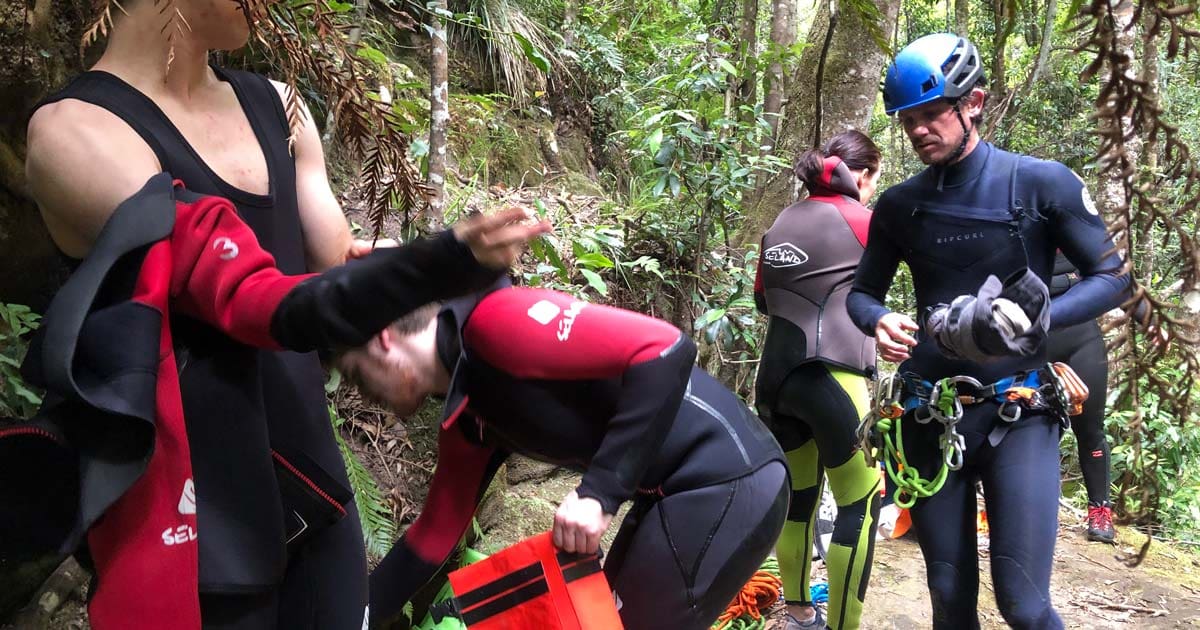
What is canyoning?
Canyoning, also known as canyoneering in some regions, is an outdoor adventure activity that involves navigating through canyons using a variety of techniques. It typically takes place in narrow, steep-walled canyons carved by rivers or streams over centuries. Canyoning offers a unique opportunity to explore landscapes that are often inaccessible by other means, taking you deep into the heart of nature’s masterpieces.
The experience
Embarking on a canyoning adventure provides an unparalleled experience of discovering nature’s hidden gems. As you navigate through a canyon, you will encounter a series of natural obstacles such as cascading waterfalls, rocky pools, and slippery surfaces. Canyoneers employ various techniques such as hiking, swimming, scrambling, climbing, and rappelling to make their way through these obstacles. Each canyon offers its own set of challenges and surprises, making every canyoning experience truly one-of-a-kind.
Equipment
To ensure safety and maximise enjoyment, proper equipment is essential for canyoning. The gear typically includes a helmet, a wetsuit or drysuit, canyoning shoes or sturdy footwear, a harness, a rappel device, and a backpack to carry essential supplies. Additionally, specialised equipment such as canyoning ropes, carabiners, and ascending devices are used for technical descents and ascents. It is crucial to have a good understanding of the equipment and its proper usage before venturing into canyons.
The thrill and rewards
Canyoning offers a thrilling and adrenaline-pumping experience that challenges both the mind and body. The sheer beauty of the canyons, with their stunning rock formations, pristine waterfalls, and lush vegetation, creates a sense of awe and wonder. As you navigate through narrow passageways, descend waterfalls, and swim in crystal-clear pools, you will feel a deep connection with nature and a sense of accomplishment with each conquered obstacle. Canyoning pushes you out of your comfort zone, allowing you to overcome fears and build confidence while forging unforgettable memories.
Safety first
While canyoning is an exhilarating adventure, it is crucial to prioritise safety. Canyons can be unpredictable environments, and proper precautions must be taken. It is advisable to undertake canyoning with an experienced guide or in a group led by knowledgeable individuals. Understanding weather conditions, assessing the difficulty level of canyons, and carrying necessary safety equipment such as first aid kits and emergency communication devices are essential steps to ensure a safe and enjoyable experience.
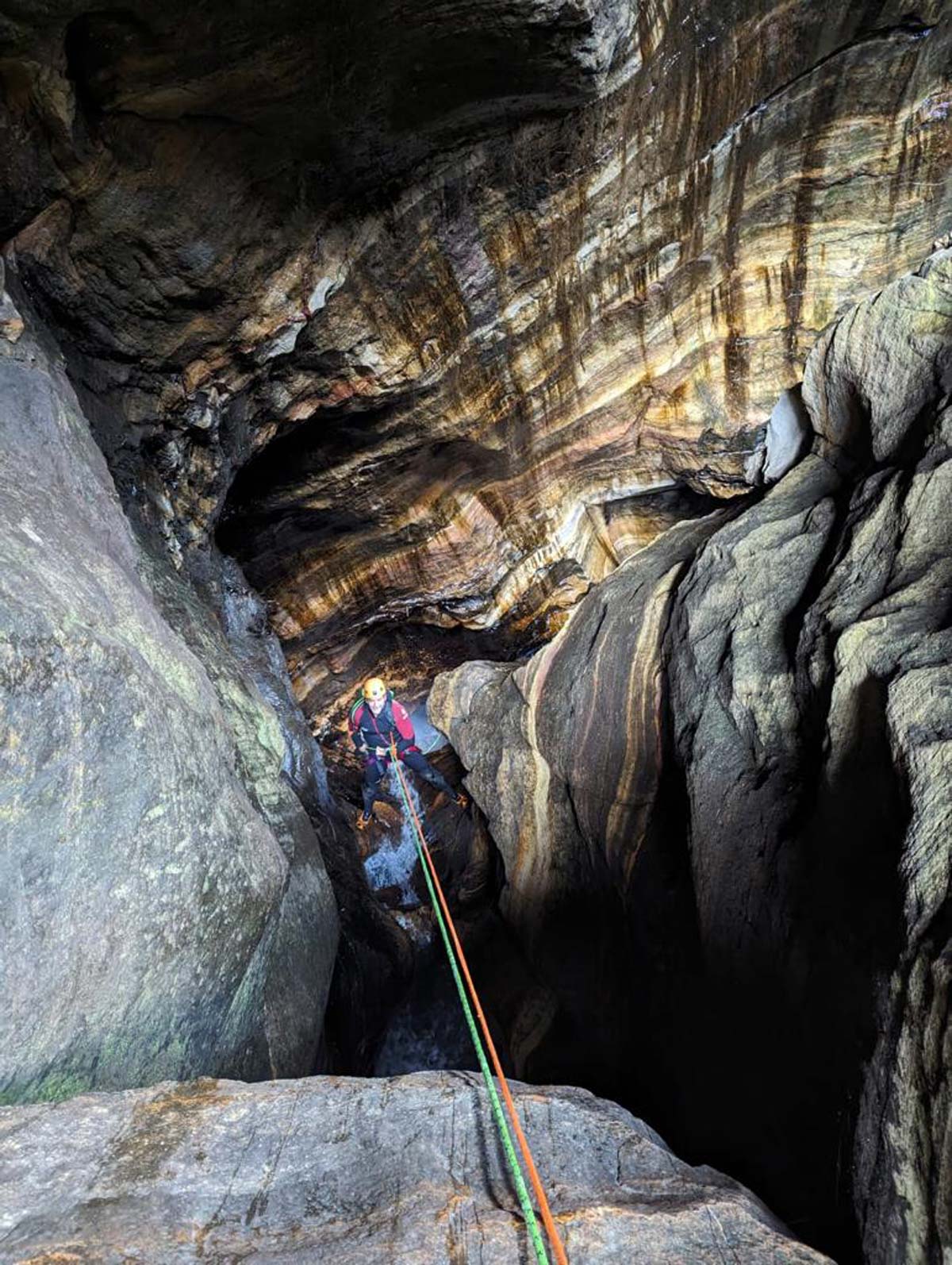
Is canyoning for everyone?
While canyoning is an exciting adventure activity, it is important to note that it may not be suitable for everyone. The level of difficulty can vary depending on the canyon and its specific challenges. Here are a few considerations to keep in mind:
- Physical fitness: Canyoning can be physically demanding, requiring strength, stamina, and agility. Hiking, climbing, swimming, and navigating through rugged terrain can require a moderate to high level of fitness. It’s advisable to assess your physical capabilities and choose canyons that align with your fitness level.
- Swimming ability: Since canyoning often involves traversing through water-filled sections, having basic swimming skills is important for safety. While you don’t need to be an Olympic swimmer, being comfortable in water and having the ability to swim short distances is recommended.
- Comfort with heights: Canyoning may involve rappelling down waterfalls or cliffs, which can be intimidating for those with a fear of heights. It’s essential to evaluate your comfort level with heights and consider whether you are willing to face such challenges during the activity.
- Experience and Knowledge: If you are new to canyoning, it is highly recommended to learn from experienced guides or undergo proper training. They can teach you the necessary techniques, safety procedures, and help you understand the potential risks involved. It’s essential to have a solid understanding of the equipment and techniques used in canyoning before attempting it on your own.
- Safety considerations: Canyoning can be a potentially hazardous activity due to natural factors like fast-flowing water, slippery surfaces, falling rocks, and changing weather conditions. It is crucial to prioritise safety at all times, follow safety guidelines, and take necessary precautions to mitigate risks.
It’s important to assess your own abilities, consider any health or medical conditions, and make an informed decision about whether canyoning is suitable for you. If you are unsure, consult with professionals, guides, or instructors who can provide guidance based on your individual circumstances.
Remember, safety should always be a top priority when engaging in adventure activities like canyoning. With proper preparation, training, and guidance, canyoning can be a thrilling and rewarding experience for those who are physically and mentally prepared to take on the challenge.
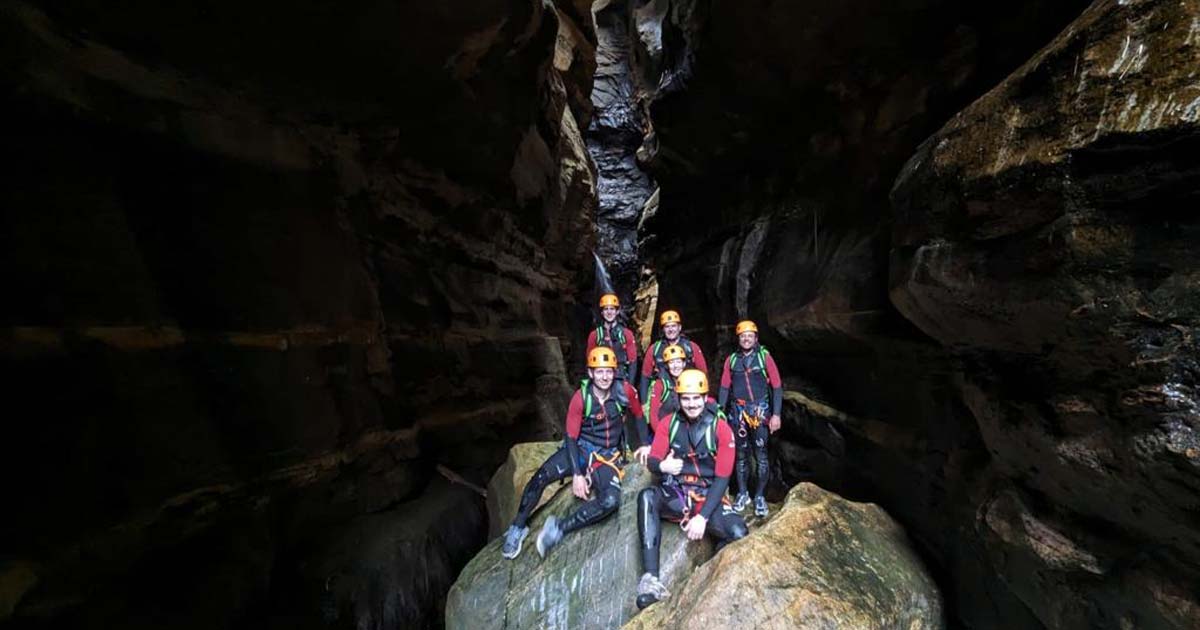
Is it best to use a qualified guide?
using a qualified guide is highly recommended when participating in canyoning, especially if you are new to the activity or unfamiliar with the specific canyon you plan to explore. Here are some reasons why having a qualified guide is advantageous:
- Safety: Canyoning involves navigating through challenging environments, including potentially hazardous conditions such as fast-flowing water, steep cliffs, and slippery surfaces. A qualified guide has the expertise to assess risks, make informed decisions, and ensure your safety throughout the experience. They are trained in rescue techniques and can respond effectively in case of emergencies.
- Knowledge and experience: Guides possess in-depth knowledge of the canyons, including their features, potential hazards, and best routes. They are familiar with local regulations, weather patterns, and any specific considerations that may impact the activity. Their experience allows them to choose suitable canyons based on the participants’ abilities and preferences, ensuring a well-planned and enjoyable adventure.
- Technical skills: Canyoning often involves using specialised equipment and techniques, such as rappelling, rope work, and anchor systems. Qualified guides are proficient in these skills and can provide instruction, guidance, and supervision to ensure proper usage and safety. Their expertise can enhance your experience, allowing you to navigate the canyons confidently and efficiently.
- Environmental awareness: Responsible exploration of canyons involves respecting and preserving the natural environment. Qualified guides promote environmentally friendly practices, emphasising Leave No Trace principles and minimising the impact on fragile ecosystems. They can educate participants on the importance of environmental conservation, ensuring that canyoning adventures are conducted in a sustainable manner.
- Local Insight and hidden gems: Guides often have extensive knowledge of the local area, including lesser-known canyons and hidden gems that may not be easily accessible or well-known to the public. They can take you off the beaten path, introducing you to unique canyoning experiences and helping you discover hidden natural wonders that you might have otherwise missed.
By opting for a qualified guide, you can enhance your canyoning experience by benefiting from their expertise, knowledge, and focus on safety. They can customise the adventure to suit your skill level, provide valuable insights, and create a memorable and enjoyable journey into the canyons.
Where to go canyoning in Australia
Australia offers heaps of fantastic locations for canyoning adventures. The country’s diverse landscapes provide a variety of canyoning experiences, from lush rainforests to rugged gorges. Here are a few popular destinations for canyoning in Australia:
- Blue Mountains, New South Wales: The Blue Mountains region, located just a few hours west of Sydney, is renowned for its stunning canyons. With a range of options suitable for different skill levels, including Empress Canyon and Grand Canyon, this area offers opportunities for both beginners and experienced canyoneers. The Blue Mountains National Park is a UNESCO World Heritage site and boasts breathtaking views and magnificent waterfalls.
- Katoomba, New South Wales: Katoomba, a town in the Blue Mountains, is a hub for canyoning activities. It serves as a gateway to several canyons, such as Claustral Canyon, Fortress Canyon, and the iconic Empress Canyon. These canyons provide thrilling experiences with abseiling, swimming through deep pools, and navigating stunning rock formations.
- Cradle Mountain-Lake St Clair National Park, Tasmania: In the pristine wilderness of Tasmania, you’ll find opportunities for canyoning in the Cradle Mountain-Lake St Clair National Park. The park offers stunning canyons like Dove Canyon and Lost World Canyon, where you can immerse yourself in the beauty of the rugged Tasmanian wilderness.
- Carnarvon Gorge, Queensland: Located within Carnarvon National Park, Carnarvon Gorge offers unique canyoning experiences. You can explore beautiful gorges, swim in crystal-clear rock pools, and marvel at ancient Aboriginal rock art. Moss Garden and Mickey Creek are popular canyons in this area.
- Cairns, Queensland: Located in the lush green World Heritage Wet Tropics Rainforest, you’ll be treated to abseils, rock jumps, rockslides & more at either Crystals or Behana.
- Jatbula Trail, Northern Territory: The Jatbula Trail, located in Nitmiluk National Park near Katherine Gorge, offers a multi-day canyoning adventure. This stunning trail takes you through ancient gorges, with opportunities for swimming, camping, and exploring waterfalls. It’s a remote and awe-inspiring experience in the heart of the Australian outback.
- Karijini National Park, Western Australia: Karijini National Park is home to some of the most stunning landscapes in Western Australia. It is a great place to go canyoning. Given its remote location, Karijini is the perfect place to get away from the hustle and bustle of city life and explore the great outdoors. But, because it is located in such a remote area, it is crucial to be prepared before you go. You will likely need a few days to explore all this national park has to offer.
- Mount Buffalo, Victoria: A great adventure to enjoy Mount Buffalo that can include abseiling, rock climbing, rock scrambling, steel wire ladder climbs and more. Situated 4 hours drive North from Melbourne, Mt Buffalo makes the perfect location for an adventurous weekend getaway or family holiday destination. The underground river is a unique experience that is perfect for the hot months of the year.
Of course this is only a short list and there are many more opportunities if you really want to give canyoning a go. Remember to check local regulations, weather conditions, and seek advice from experienced guides or tour operators when planning your canyoning adventure in Australia. They can provide valuable insights, ensure your safety, and help you make the most of your canyoning experience in this remarkable country.
A captivating adventure
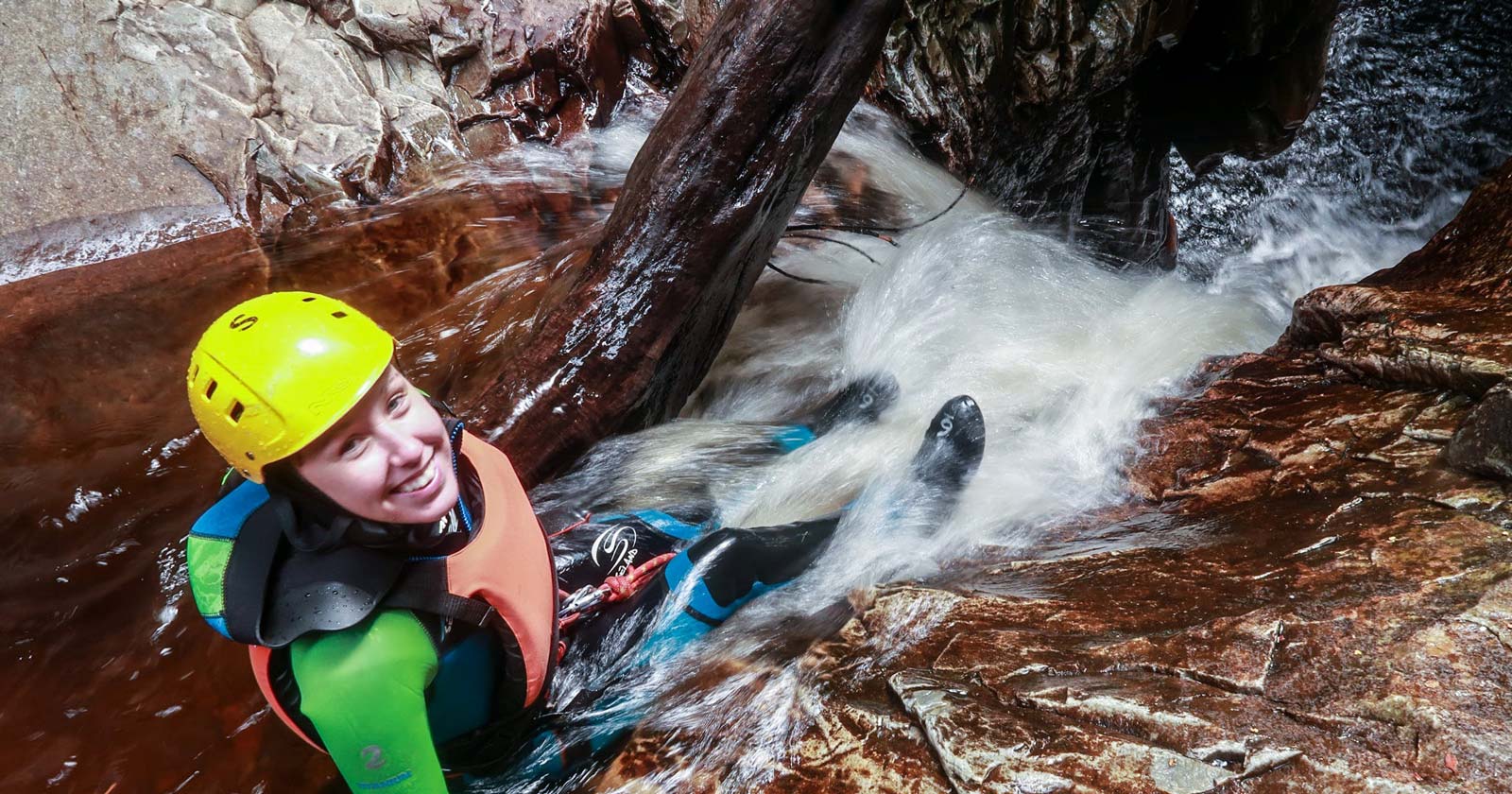
Canyoning is a captivating adventure that allows you to explore the hidden wonders of canyons, immersing yourself in the raw power and beauty of nature. Whether you are a seasoned adventurer or someone seeking a thrilling outdoor experience, canyoning offers a unique blend of excitement, physical challenge, and natural beauty. So, if you’re ready to embark on an unforgettable journey, don your gear, embrace the unknown, and let the canyons unveil their mesmerising secrets, one waterfall at a time. Get ready to make memories that will stay with you for a lifetime.
Remember, canyoning is not just about the thrill and adventure; it’s also about respecting and preserving nature. As you explore canyons, be mindful of the fragile ecosystems they house. Leave no trace behind, follow established guidelines, and take care to minimise your impact on the environment.
So, whether you’re drawn to the rush of adrenaline or the desire to connect with nature on a deeper level, canyoning offers an unparalleled experience. It’s a chance to push your limits, conquer your fears, and create memories that will last a lifetime. Embrace the challenge, savor the beauty, and let canyoning take you on an extraordinary journey into the heart of nature.
Are you ready to take the plunge and explore the mesmerising world of canyoning? Get ready for an adventure like no other—a thrilling blend of nature’s wonders, physical prowess, and unforgettable moments. Embark on this extraordinary journey, and let canyoning ignite your passion for adventure and awaken your sense of awe in the face of nature’s breathtaking power.
So gear up, seek out the canyons that call to you, and let the adrenaline flow as you step into the realm of canyoning. Unleash your adventurous spirit and immerse yourself in the raw beauty that awaits within these magnificent natural formations. Remember, in the canyons, you’ll discover not only the wonders of nature but also the strength and resilience within yourself.
Main image credit: Empress Falls Canyon – Blue Mountains Adventure Company

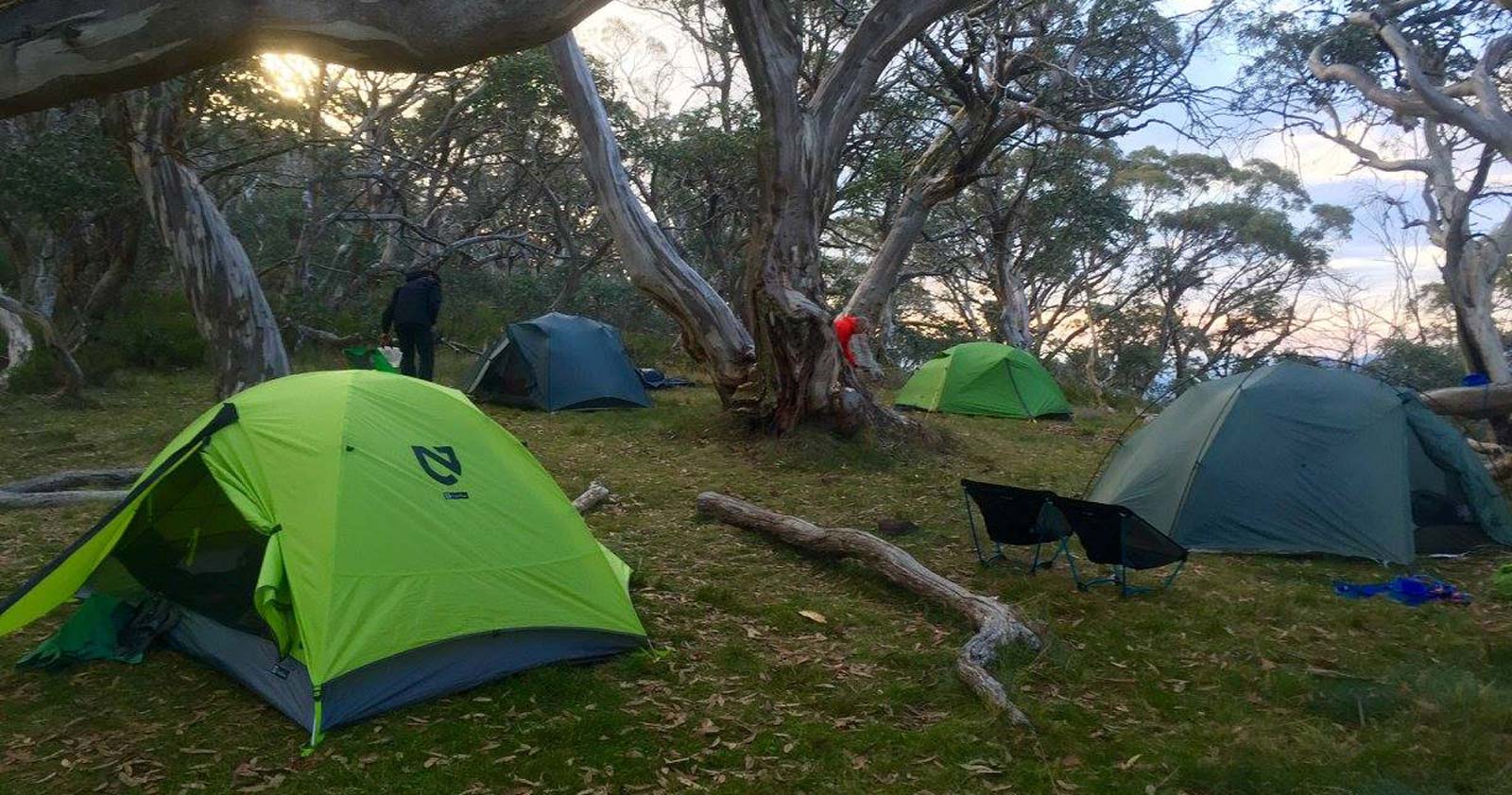



The family and I headed to NSW last week for our first canyoning adventure. I’m hooked. It was amazing.